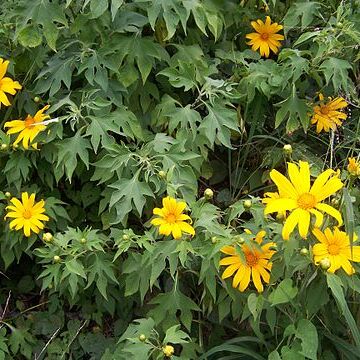Annual or perennial herbs or shrubs. Leaves alternate or sometimes opposite near the base, 3-veined from base. Capitula solitary on long lateral peduncles which thicken near apex, heterogamous, radiate; phyllaries 2–5-seriate; paleae clasping disc florets. Ray florets sterile, 2–3-toothed; disc florets tubular, 5-lobed; anthers with sagittate base and apical appendage; style-arms hairy abaxially. Achenes oblong; pappus a crown of free scales, usually with 1–2 awns.

